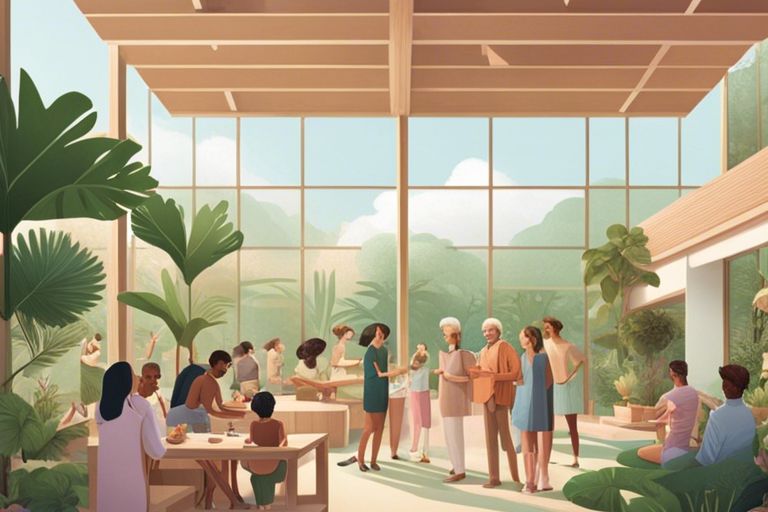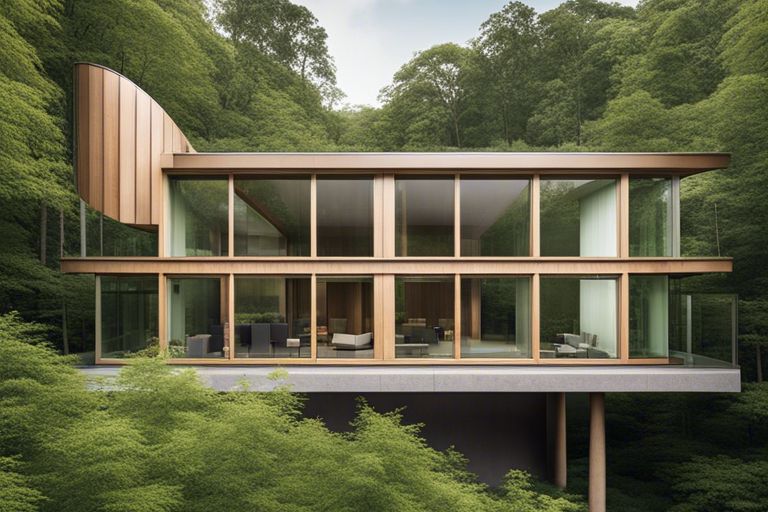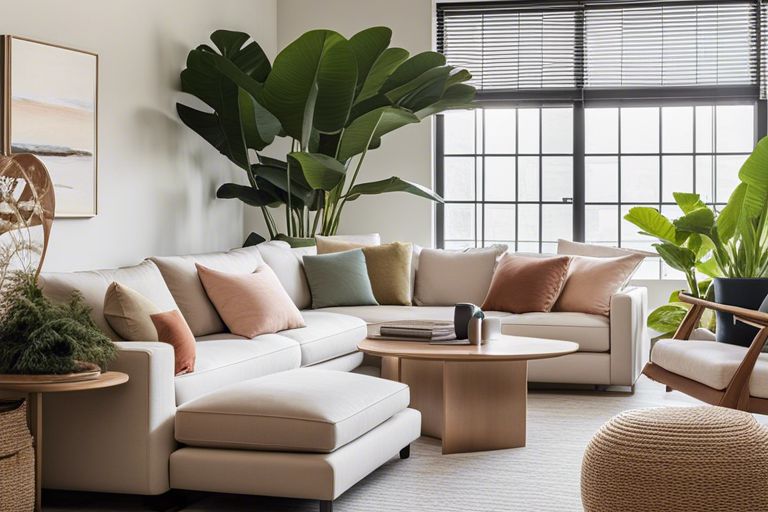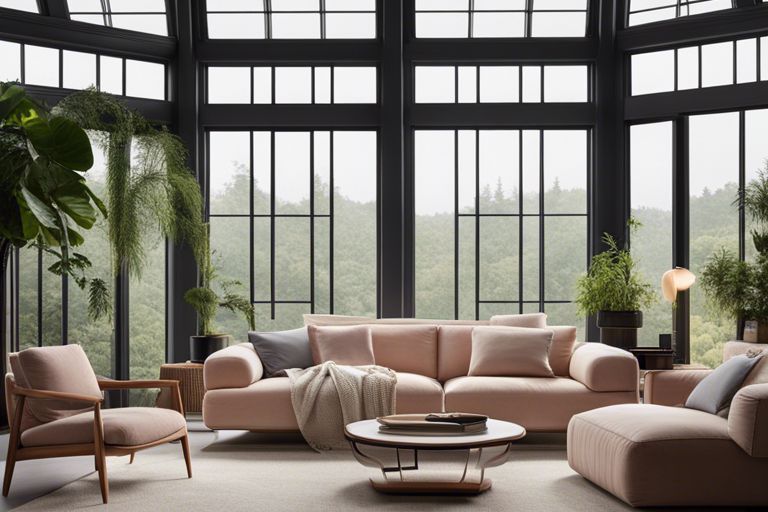Just imagine stepping into a space where lush greenery surrounds you, natural light floods in, and a sense of calm washes over you. In biophilic environments, the integration of nature into design is not just about aesthetics – it’s about enhancing your well-being and fostering community. By creating spaces that invite interaction and connection, we can strengthen relationships, spark creativity, and promote a sense of belonging within our communities. Let’s explore how thoughtful design can shape the way we live, work, and play in harmony with nature.
Key Takeaways:
- Biophilic Design: Intentionally incorporating nature into our built environments can enhance community interaction and well-being.
- Social Spaces: Designing communal areas with natural elements like plants, water features, and natural light can encourage social connections and a sense of belonging.
- Community Engagement: By creating spaces that invite people to gather, interact, and connect with nature, we can foster a stronger sense of community and improve overall quality of life.
The Importance of Community in Urban Spaces
A sense of community is crucial for urban spaces to thrive. It provides a feeling of belonging, safety, and connection to the people around you. In bustling cities, where life can sometimes feel isolated and fast-paced, fostering a strong community is even more crucial. When you have a sense of community in your urban environment, you are more likely to engage with your surroundings, contribute positively to the community, and feel supported in times of need.
The Role of Public Spaces in Shaping Social Connections
With the decline of traditional gathering spots like town squares and communal parks, public spaces play a significant role in shaping social connections in urban environments. These spaces are where you can interact with your neighbors, meet new people, and participate in community events. They are the heart of any bustling city, offering a place for people to come together, share experiences, and build relationships. By creating well-designed and inviting public spaces, cities can foster a sense of community and belonging among their residents.
The Impact of Urbanization on Community Dynamics
Any rapidly growing urban area faces challenges when it comes to maintaining strong community dynamics. The rapid influx of people, the proliferation of high-rise buildings, and the prioritization of efficiency over human connection can lead to a breakdown in community bonds. As neighborhoods become more densely populated and transient, it can be harder to form lasting relationships with your neighbors. However, despite these challenges, it is possible to foster community in urban environments through intentional design and programming.
Importance: It is important to recognize the effects of urbanization on community dynamics and take proactive steps to counteract potential negative impacts. By prioritizing spaces that encourage interaction, collaboration, and a sense of belonging, urban planners and developers can create environments that support strong community bonds despite the challenges of modern city living.
Biophilic Environments: A Catalyst for Interaction
Now, let’s examine into how biophilic environments can serve as a catalyst for fostering social interaction and community building.
Defining Biophilia and Its Benefits
On your journey to understanding the importance of biophilic design, it’s crucial to grasp the concept of biophilia – our innate connection to nature. By incorporating natural elements into our built environments, such as greenery, natural light, and views of nature, we can experience a myriad of benefits. Research has shown that exposure to nature can reduce stress, improve cognitive function, and enhance overall well-being. This deeper connection to nature not only benefits individuals but also has a profound impact on building community and social interactions.
How Nature-Inspired Design Fosters Social Interaction
Biophilic design goes beyond aesthetics; it has the power to transform how we interact with each other and our surroundings. By integrating elements like communal green spaces, natural materials, and biophilic patterns, these spaces encourage spontaneous conversations, collaboration, and a sense of belonging. The deliberate design of shared spaces within biophilic environments can bring people together, creating opportunities for meaningful connections and social interactions.
Biophilic design can also help break down barriers and create a sense of unity among individuals from diverse backgrounds. When surrounded by nature-inspired elements, people tend to feel more relaxed, open, and inclined to engage with one another. This shared connection to the natural world serves as a common ground for fostering relationships and building a stronger sense of community.
Benefits of implementing biophilic design in communal spaces extend far beyond aesthetic appeal. By incorporating nature-inspired elements, you can create environments that promote social interaction, collaboration, and a greater sense of community among individuals.
Designing for Community Engagement
Keep in mind that fostering community engagement is crucial in biophilic environments. Designing spaces that encourage interaction and create a sense of belonging is necessary for a thriving community. To learn more about creating positive spaces for community engagement, you can refer to the Community Design Guide.
Principles of Inclusive and Accessible Design
Community engagement starts with designing spaces that are inclusive and accessible to everyone. By incorporating universal design principles, you can ensure that your biophilic environment is welcoming to people of all ages, abilities, and backgrounds. Pay attention to features such as ramps for wheelchair access, seating areas with varying heights to accommodate different preferences, and clear wayfinding signage for navigation.
Creating Spaces for Informal Gathering and Socializing
For an active and vibrant community, it is necessary to create spaces that facilitate informal gatherings and socializing. By designing cozy seating areas, communal gardens, or outdoor plazas, you can encourage spontaneous interactions and foster a sense of community among residents and visitors alike. These spaces can serve as gathering points for events, storytelling sessions, or simply a place to relax and connect with others.
With thoughtful design and intentional planning, you can create environments that promote community engagement and enhance the human experience. Remember that the goal is to build spaces that not only connect people with nature but also with each other, fostering a strong sense of community and belonging.

The Power of Green Spaces in Community Building
Your community greatly benefits from the presence of green spaces, as they provide valuable areas for interaction, relaxation, and connection among residents. Urban parks and gardens play a vital role in fostering a sense of community togetherness and belonging.
Urban Parks and Gardens as Community Hubs
For urban areas, the creation of parks and gardens serves as a much-needed escape from the concrete jungle. These green spaces promote social cohesion by offering a common meeting ground for people of all ages and backgrounds. Community events, markets, and gatherings often take place in these locations, encouraging social interaction and a sense of shared identity.
The Therapeutic Effects of Greenery on Mental Health
For individuals, interacting with nature has proven therapeutic benefits on mental health. Connecting with greenery in urban settings can reduce stress, anxiety, and depression. Being in green spaces enhances mood, boosts creativity, and improves overall well-being.
Urban dwellers who have regular access to green spaces are more likely to engage in physical activity, leading to a healthier lifestyle. Green environments also provide a sense of escape from the hustle and bustle of city life, offering residents a much-needed respite from the stresses of urban living.
Building Materials and Community Character
Many aspects contribute to the character of a community, and the choice of building materials plays a significant role in shaping its identity.
Sustainable Materials and Their Role in Community Identity
Identity – Sustainable materials such as reclaimed wood, recycled metal, and low-impact concrete not only reduce environmental impact but also contribute to the unique identity of a community. By using materials that reflect local values and resources, you can create a sense of place that resonates with residents and visitors alike. These materials tell a story of sustainability, innovation, and respect for the environment, shaping the community’s character in a meaningful way.
How Building Design Reflects Community Values
For communities, building design is more than just an aesthetic choice – it is a reflection of shared values, beliefs, and aspirations. The design of buildings, public spaces, and infrastructure can convey a sense of community pride, social cohesion, and cultural heritage. Whether through architectural styles, public art installations, or sustainable design features, each element sends a message about what the community values and stands for.
Plus, when community members are actively involved in the design process, they feel a stronger sense of ownership and connection to the built environment. Collaborative design approaches, such as community workshops, participatory design charrettes, and public consultations, empower residents to shape their surroundings according to their needs and preferences. This involvement not only creates more inclusive and meaningful spaces but also fosters a sense of community spirit and belonging.
Activating Spaces for Community Interaction
Once again, creating community interaction within biophilic environments involves intentional design and thoughtful planning. Spaces that encourage social connection are vital for fostering a sense of community and belonging. One effective way to activate these spaces is by organizing programming and events that bring people together.
Programming and Events that Foster Social Connection
Spaces that host regular events such as workshops, wellness classes, or community gatherings provide opportunities for individuals to engage with one another. These events not only create a sense of belonging but also promote social interaction and a shared connection to the environment. By incorporating a variety of activities that appeal to different interests, you can ensure that there is something for everyone to enjoy.
The Importance of Flexibility and Adaptability in Public Spaces
Importance of flexibility and adaptability in public spaces cannot be overstated. When designing areas for community interaction in biophilic environments, it is vital to create spaces that can easily transform to accommodate different types of events and activities. Whether it’s movable furniture, modular structures, or multi-functional zones, having adaptable spaces allows for strong>easy reconfiguration to meet the changing needs of the community.
To create a dynamic and engaging environment, consider incorporating features such as pop-up installations, movable seating, and transformable landscapes that enable a variety of activities and gatherings. By embracing flexibility and adaptability in the design of public spaces, you can create a dynamic and inclusive environment that fosters community interaction and connection.
To wrap up
On the whole, fostering a sense of community through building spaces for interaction in biophilic environments is crucial for our well-being and connection to nature. By incorporating elements of nature into our built environment, we can create spaces that nurture social interactions, promote mental well-being, and strengthen the bonds between individuals. Keep in mind, your surroundings have a significant impact on your mood and behavior – so why not design spaces that encourage community engagement and a harmonious relationship with nature?
FAQ
Q: What is a biophilic environment?
A: A biophilic environment is a space designed to incorporate elements of nature to create a more harmonious and human-centered experience. This design approach aims to strengthen the connection between people and nature, resulting in spaces that promote wellbeing and creativity.
Q: How can biophilic design foster community interactions?
A: Biophilic design can foster community interactions by providing spaces that encourage social connections, collaboration, and a sense of belonging. When people are surrounded by nature-inspired elements, such as natural light, plants, and organic textures, they are more likely to engage with each other and form meaningful relationships.
Q: What are some key principles of building spaces for interaction in biophilic environments?
A: Some key principles of building spaces for interaction in biophilic environments include incorporating natural elements like greenery and water features, creating flexible and multipurpose areas for different activities, prioritizing access to natural light and views, and designing spaces that promote movement and exploration. By embracing these principles, designers can create environments that enhance community engagement and promote a sense of connection to nature.



